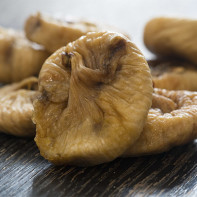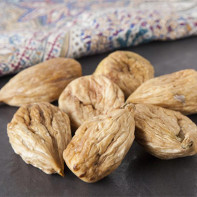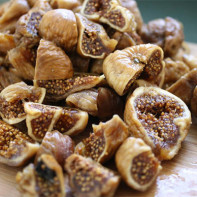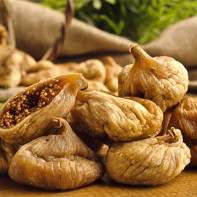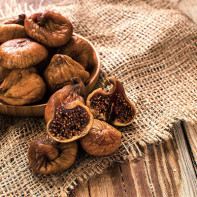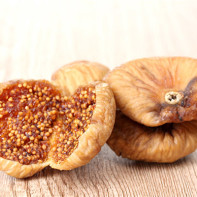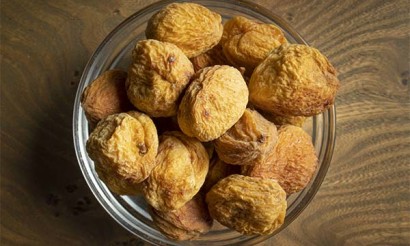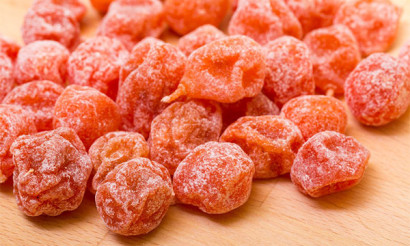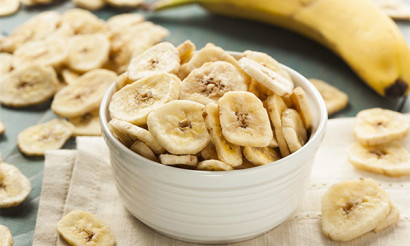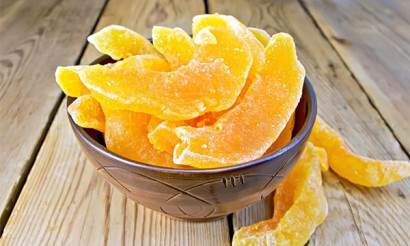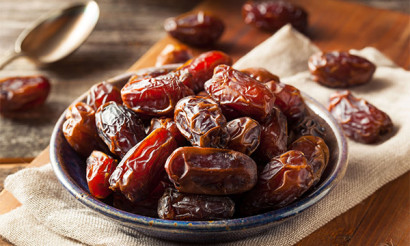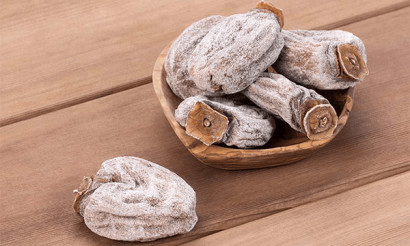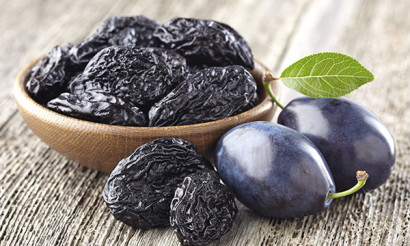Dried figs: useful properties and contraindications.
Dried figs are delicious and useful. Unlike many other useful products, they are perfectly stored, so they are available at almost any time.
- Why do dried figs smell like iodine
- Composition and calories
- Useful properties of dried figs
- General benefits
- For Women
- For Men
- For Pregnancy
- For breastfeeding
- For children
- Weight loss
- What type of figs are healthier: dried or fresh?
- Dried figs in medicine
- For diabetes
- With pancreatitis
- At gastritis
- When constipation
- For Cough
- Recipes of traditional medicine based on dried figs
- Cosmetic Applications
- Rejuvenating Mask
- Oily Skin Mask
- Moisturizing Lotion
- Hair Mask
- Cooking
- Hazards and contraindications
- How to choose and store dried figs
- How to eat dried figs correctly
- How many can be eaten per day.
- Do I wash them before eating?
- How to Dry Figs at Home
- What can be made of dried figs: Recipes
- Compote
- Jam
- Interesting facts about Figs
Why Dried Figs Smell Like Iodine
Both fresh and dried figs contain iodine. But in the second case, its content is much higher. That's why dried figs noticeably smell like iodine. Sometimes people say it smells like medicine, but they mean iodine. There is nothing wrong with this smell, and dried figs are generally healthier than fresh ones, as they contain more B vitamins, phosphorus, sodium and iron. However, people suffering from diseases of the endocrine system should use it with caution.
Composition and calories
The energy value of dried figs is much higher than that of fresh figs. It is 257 kcal per 100 g. But at the same time its fruits have a unique composition. They contain:

- Iron (30% of the daily norm). It is necessary for the normal process of blood circulation. In addition, iron is an element without which increased mental activity is impossible. For a long time apples were considered the champion of iron content. However, in dried figs this element is present in greater quantities. That is why its fruits are recommended to those who suffer from iron deficiency anemia, as well as to children for successful studies.
- Potassium. It is an element that improves the cardiovascular and nervous system. 200 g of figs contains 35% of its daily allowance.
- Calcium. An element that plays an important role in strengthening bones, it is also necessary for the health of teeth and nails (30% of the daily allowance of 100 grams of figs).
- Tryptophan. This is an amino acid that is necessary for the production of vitamin B3 and melatonin. It is these substances provide a person a good night's sleep.
- Fatty acids and phenols. They help prevent skin cancer.
- Elements such as magnesium, phosphorus, copper, and iodine. They are needed to ensure normal metabolic processes. Iodine is also very important for maintaining a good psycho-emotional state and mental activity.
Also dried figs contain more protein and sugar than fresh ones. While raw fruits contain up to 1% protein and 15-23% carbohydrates, depending on the variety, after drying these figures increase to 3-6% and 40-70% respectively. And the carbohydrates in this case are represented by glucose and sucrose.
Figs contain a large amount of soluble fiber. Its fiber includes substances that reduce the level of "bad" cholesterol in the blood. This makes dried figs an excellent preventive measure against venous insufficiency and hypertension. In addition, thanks to the fiber, it also has a laxative effect.
Useful properties of dried figs
General benefits
These dried fruits have many useful properties. For example, dried figs:
- Improves the psycho-emotional state.
- Reduces blood pressure and strengthens the walls of blood vessels.
- Normalizes digestive processes, also due to the large amount of pectin. Can be used as a mild laxative.
- Provides the body with energy, increases efficiency, relieves chronic fatigue.
- It has a mild diuretic effect, without flushing out the body of potassium.
- It has a beneficial effect on the immune system.
Finally, dried figs are very delicious. They can be a wonderful alternative to the traditional candies and sweets.
For women
Figs contain substances that can prevent cancer. In particular, there are studies that prove that regular consumption of dried fruit reduces the risk of malignant tumors of the breast by almost 50%. This can be achieved by normalizing the level of estrogen.
Besides, dried figs are useful for women during menopause. The fact is that at this time the risk of osteoporosis increases. But eating figs can prevent this problem because these fruits contain a lot of calcium, even more than dairy products. And it is especially important when combined with phosphorus, which enhances its effect.
For Men
Since ancient times, dried figs have been used to treat erectile dysfunction. The fact is that this fruit contains a lot of iron and other elements that improve blood flow. In addition, calcium, magnesium and potassium add strength and vigor, increase endurance, have a favorable effect on the reproductive system. Moreover, magnesium is necessary for the production of male hormones, including testosterone.
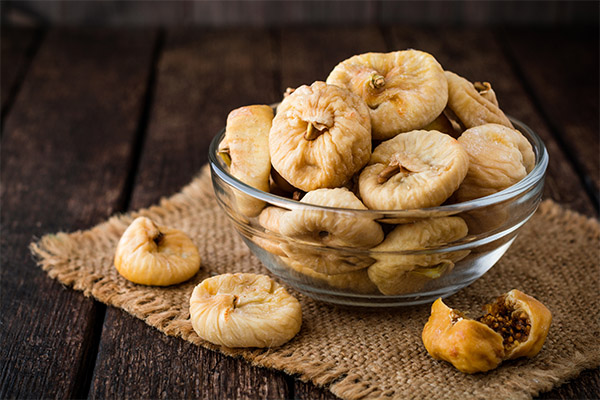
Also, dried figs contain a lot of zinc, and this element has an anti-inflammatory effect. Thanks to this, the fruit can be used as a prophylactic of prostatitis.
For the use of dried figs to give results, it is recommended to soak 2-3 fruits overnight in low-fat milk, and in the morning eat them on an empty stomach.
When pregnant
It is very important for expectant mothers to get all the vitamins and minerals necessary for the proper physical development of the fetus while carrying a child. From this point of view, dried figs are very important. After all, they contain a lot of vitamin B, as well as folic acid, substances necessary for the development of the nervous system. It is enough to eat 2-3 fruits a day to get the necessary vitamins and minerals and normalize digestion. For expectant mothers, this is a great prevention of constipation, and after all, with this problem in pregnancy, many face.
Of course, it is quite a caloric product, but you can eat it as a snack - it's much healthier than the corresponding energy value of rolls and candy. Moreover, a couple of fruits perfectly satisfies hunger, and in such an amount of product contains not so many calories.
However, in gestational diabetes (this is its specific form, which passes after delivery) figs should not be used, so it is better to consult a doctor, leading a pregnancy.
When breastfeeding
In the postpartum period, dried figs are very important because they help to provide the mother's body with vitamins and minerals - and at this stage a woman often experiences a severe shortage of them. At the same time, figs are good because they cause almost no allergic reactions, excluding cases of individual intolerance.
However, in the diet of a nursing mother such fruits should be introduced very carefully. The fact is that the high fiber content can cause her bloating, and the baby may have a corresponding reaction. Therefore, figs are introduced into the diet literally one piece at a time and be sure to monitor the condition of the child's digestion.
For children
Dried figs have many useful properties. After all, it includes the above mentioned potassium, calcium, iron, magnesium and other elements. These fruits should be given to children for the prevention of diseases of the respiratory system, including the lungs. Dried figs warmed with milk is one of the most effective cough remedies, and it can be given even to young children. In addition, on a par with raisins and prunes, figs can be an excellent remedy against constipation.
Children after two years of age are given figs together with porridge, cottage cheese, or as a separate treat. Before that, you can use it as a decoction.
When losing weight
Although figs are considered a caloric product, they are actually useful for weight loss. Usually, nutritionists recommend raw figs because they contain less sugar and more water. However, if there are no contraindications like diabetes, you can also use dried fruits.
They contain a lot of fiber. It has a beneficial effect on intestinal peristalsis, and strengthens it in the most gentle and safe way, which helps to prevent constipation. But it is important for weight loss that in this case, toxins come out of the body faster, the assimilation of useful elements from food is improved, and lipid metabolism is adjusted. All this allows you to get rid of extra pounds. And, unlike other methods of achieving the goal, this one gives a stable result.
Dried figs are most often used in detox programs. For example, make the following remedy - for 100 grams of dried figs, take the same amount of raisins and apricots, as well as 100 grams of senna grass. All dried fruits are crushed in a blender, while the herb is poured over 1 liter of boiling water and insisted for two hours. Then the herbal infusion is strained and, before it cools completely, mixed with crushed dried fruits. The remedy is kept warm for 10-12 hours, and in the morning it is ready for use - 1 tbsp. spoon every night before meals. Then every morning the body will undergo a natural purification. The course of treatment is designed for a week. During this time, you can lose up to 3 extra pounds.
Which figs are more useful: dried or fresh?
There is no unequivocal answer to this question. On the one hand, fresh figs contain more water and less sugars. At the same time, its fruits take up more space in the stomach, so they allow you to satisfy your hunger faster. If we are talking about eating figs for diabetes or for a therapeutic diet, the fresh fruit will be more useful.
On the other hand, dried fruits have more fiber, higher content of vitamins and minerals. When treating the respiratory organs, eliminating constipation, consuming in winter to strengthen immunity, as well as including dried fruits in the diet of an athlete who attends strength training, they will be more useful.
Dried figs in medicine
Although the benefits of dried figs have long been proven, they can not be consumed for all diseases. Also, in some cases, it is not the fruit itself that is beneficial, but the decoction from it. Therefore, before including dried figs in your diet, it is necessary to consult with a doctor, especially if there are chronic diseases of the gastrointestinal tract.
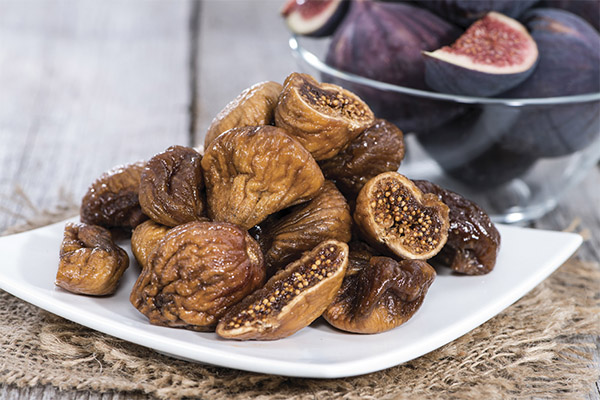
In case of diabetes
Since the product contains a lot of glucose, it should be used with caution in case of diabetes. Of course, if you eat one or two fruits from time to time, there will be no special harm. Moreover, dried figs contain many other useful substances. But in general, it is not recommended for type 1 and type 2 diabetes. And this is not surprising, since the glycemic index of figs is 62 units. True, the presence of potassium in its composition allows you to smooth out sudden sugar spikes, but as mentioned above - the maximum amount is one or two medium fruits, no more.
In pancreatitis.
In pancreatic inflammation, dried figs are not recommended for consumption (neither in the acute form of the disease, nor in the chronic form). Reasons for the restriction:
- Figs contain a large amount of coarse fiber, which not only has an irritating effect on the intestines, but also increases the load on the pancreas, so that eventually it can provoke exacerbation of the disease.
- The fruit contains a lot of glucose and fructose. Insulin is needed for their normal digestion, and this hormone is produced by the pancreas, which is already suffering from inflammation. So it is worth reducing the load on it.
- Dried fruits contain a certain amount of oxalic acid, which can also provoke an exacerbation of pancreatitis.
At the same time, dried figs belong to the number of quite caloric products, and with pancreatitis it is very important to limit the energy value of the diet, so as not to provoke the development of diabetes.
However, fans of dried figs can consume decoctions of these fruits even with pancreatic inflammation. This will help to provide the body with all the useful minerals, while not putting it at risk.
Gastritis
This disease is an inflammatory process on the mucous membrane of the stomach. Therefore, both in the acute form of gastritis and in the chronic form, it is not recommended to use dried figs for the above reasons - they provoke irritation of all gastrointestinal organs, and oxalic acid increases inflammation. However, a decoction of these fruits will be useful for gastritis.
With constipation
The very fiber, because of which dried figs are not recommended to eat with gastritis and pancreatitis, in this case is considered an advantage, because it helps to improve intestinal peristalsis and cleanse it.
For coughs
In Russia and Europe, in home medicine, figs are considered an excellent remedy for coughs. Usually they are cooked with milk, and you should take a drink quite fat, not less than 3.2%. This is necessary in order to soften the irritated mucous membranes. Milk is poured into a metal mug and heated over low heat. Dried figs are first thoroughly washed, then put in the hot milk. For 1.5 cups of the drink take 1-2 fruits of medium size. Bring the drink to a boil and leave for half an hour on low heat, be sure to put a lid on top. During this time will evaporate about 30% of the volume of milk, and as a result you will get almost a glass of cough medicine. You should wait until it cools down completely and infuses - this will happen within about 2-3 hours. After that, the remedy is drunk a little at a time during the day.
Recipes for traditional medicine based on dried figs
These fruits are widely used in folk medicine, where they are used for diseases of the respiratory organs, cardiovascular system, etc. For example, you can use the following remedies:
- With tracheitis and even bronchitis will help figs with milk, prepared according to a simpler recipe than was described above. Take 4-5 dried figs, knead them in a mortar, pour a glass of warm, but not hot milk and stir them. The remedy is recommended to take 100 ml four times a day.
- For crushing and excretion of kidney stones take 3-5 dried figs, pour a glass of water, bring to a boil, keep on low heat for 5 minutes, then mash and grind in a mortar. Decoction with pulp taken during the day before breakfast, lunch and dinner, dividing into equal portions.
- From constipation helps a decoction of figs - 50 g of dried fruit (4-5 pieces) pour a liter of boiling water, bring to a boil and leave on low heat for another 30 minutes. The decoction cooled, but do not strain, pulverize the fruit in a mortar. This remedy should be drunk three times a day for 100 ml.
- Sweet balls are used to treat and prevent cardiovascular disease. For 100 g of figs take the same amount of raisins, 0.5 tsp. powdered ginger, the same amount of nutmeg, ground on the finest grater. All the ingredients are chopped in a blender and mixed until a homogeneous mass, from which the sausage is formed. Use a sharp knife to cut it into pieces, from which roll balls of 1 cm in diameter. Such balls can be taken one by one in the morning and evening.
- From dried figs make a universal syrup, which can be used for coughs, the treatment of cardiovascular diseases, flu and respiratory infections, digestive problems. Take 8 dried figs, grind them, pour a glass of water, bring the mixture to a boil and boil over low heat for 20 minutes. Then strain the broth, add a glass of sugar and top up water to the original volume. The syrup is boiled until the sugar has dissolved. Then squeeze the juice of half a lemon, add 1 teaspoon of ground ginger or grated root and pour the liquid into a glass container, which cover. Drink the syrup can be both children and adults, but in different dosages. Adults - 3-4 dessert spoons per day, and children - half as much.
Interestingly, the fig tree has useful not only fruits. Fig leaves also contain valuable biologically active substances and are widely used in phytotherapy.
Cosmetic applications
Dried figs are used in cosmetology less often than fresh figs, but still there are such recipes. In most cases, before cooking on the basis of figs any means, be sure to soak them in boiling water or warm milk for 15 minutes. Then you can prepare such compositions:
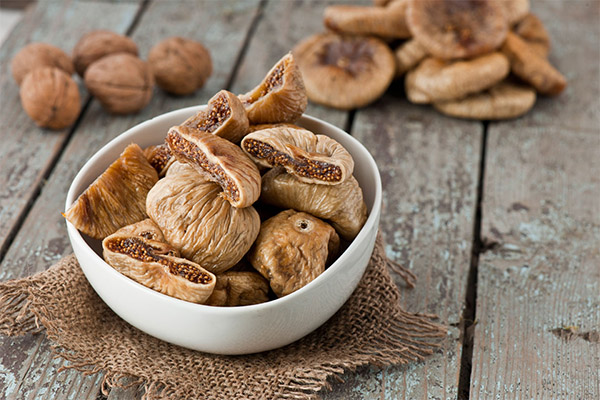
Rejuvenating mask
For 2-3 crushed dried fruits, take the raw yolk of a chicken egg, 5-10 grams of flower honey and the same amount of olive oil, which can be replaced by grape seed oil if desired. All ingredients are mixed and applied to previously cleansed skin on the face and neck. After 30 minutes the mask is washed off with cool water or remove the composition with a dry cloth soaked in micellar or thermal water. Such a mask should be used for a month, a total of 8 treatments, then the effect will be maximum.
Mask for oily skin
This composition will help to make the skin fresher and firmer, and at the same time will remove irritation, redness and inflammation. For the mask, it is recommended to boil one dried fig fruit and mix it with the pulp of an apple, grated. To these ingredients add about a spoonful of yogurt and a couple of drops of lemon juice, which will help to whiten the skin. The composition is mixed in a blender, then it is applied generously to the skin of the face. This mixture is kept on the face for half an hour, then washed off in the usual way.
Moisturizing lotion
Figs in the composition of such a means enhances its moisturizing properties, makes the skin smoother. For this recipe, you need only one fig fruit, which is poured over a glass of just recently boiled milk. This remedy is infused for a couple of hours, then filtered. The resulting infusion can be stored in the refrigerator. This remedy is recommended to wipe the skin on the face 2-3 times a day. After that, wash with plain water without the use of additional cosmetics.
Hair Masks
Since ancient times, women have used figs for hair care. There are many variations on this subject, but in general they all contain, in addition to the fruit, also milk. For example:
- For hair growth, it is recommended to make a kind of balm - for 1 cup of milk, take 2 dried fig fruits. This mixture is brought to a boil, then lower the heat to the lowest setting. Boil until it turns into a homogeneous mass. After that, add 10 g of flower honey and the same amount of traditional (but not dry) yeast. This mixture is applied to the scalp, put a plastic cap on top and leave for an hour and a half, after which the mask is washed off with shampoo.
- There is a simpler version. For this, the same amount of figs are crushed, poured in a glass of milk, and boiled over low heat. While still warm, the product is applied to the roots of hair and gently distribute to the entire length. Such a mask is made for an hour, then washed off in the usual way. Mask for hair based on figs help to forget about hair loss, the presence of split ends, etc. Curls become shiny, silky and elastic.
Cooking applications
Dried figs can be used not only for sweet dishes, although most often they are added to baked goods, and also prepared from it compotes and uzvar, combining with any other dried fruits, including dates, prunes or apples. You can also add spices like cinnamon or cloves.
If dried figs are soaked in water, steamed or scalded, they will almost regain their original shape. Reconstituted figs can be used for salads, and they also go well with meat dishes, especially oriental style. Figs are good to add to baked goods. For example, in Britain they make pudding with figs. Couscous is popular in North Africa.
In France, figs have also caught people's taste, as well as in other Mediterranean countries. They are used for a variety of purposes, they make a wonderful dessert for the New Year's table - it is called Les quatres mendicants. It is a traditional dish of Provence, which contains hazelnuts, almonds, raisins, but most importantly - figs.
Hazards and contraindications
Dried figs are an extremely useful product. However, it contains a lot of carbohydrates - up to 60%, so if you have diabetes, it will increase the blood glucose level. And if eaten in excess, even in a perfectly healthy person, they can cause flatulence, bloating, and other troubles. In addition, figs reduce blood clotting, so in some pathologies associated with this phenomenon, it must not be used.
Dried figs are contraindicated in diabetes, as well as in the presence of inflammatory pathologies of the gastrointestinal tract and peptic ulcer, both in acute and chronic form. It does not cause allergies, but with individual sensitivity to the substances it contains, the reaction may be very similar.
How to choose and store dried figs
As with any other dried fruit, the quality of dried figs can be judged by their appearance. Its fruits should be whole, with no cracks, tears or any other damage in their shell, through which the pulp would peek. It is better to buy figs by weight or in a transparent package so that you can check for foreign impurities or bug larvae and other pests.
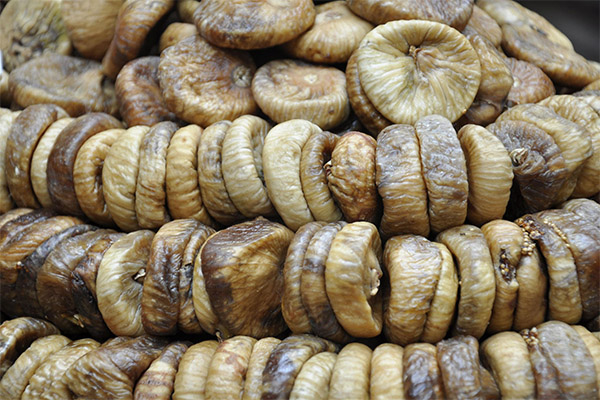
If you can, you should hold the fruit in your hand to make sure that it is firm, elastic and resilient enough. Their surface should not be too wrinkled, otherwise you are talking about dried figs, which have not retained their flavor qualities. In addition, they would have to be steamed, because otherwise such fruits are simply impossible to chew.
However, too smooth, a little greasy surface indicates that the fruits were treated with vegetable oil. There is nothing harmful and terrible in this, but from the nutritional point of view it is much less useful.
Quality dried figs should have a light brown or beige color. Its fruits should be matte. The presence of a light plaque is quite acceptable. This is not a chemical, but glucose that has come to the surface. If the dried fruit looks too bright, literally golden, it means that it has been treated with various chemicals, including sorbic acid and sulfur dioxide. Often these additives act as a preservative. If figs are sold in a package, the manufacturer is required to list such ingredients on it (these are E 200-202 and E 220).
If possible, it is worth trying one fruit to taste. If you can feel the acidity, you will have to refuse to buy them, because such figs have not been stored correctly.
Dried figs have a solid shelf life. And he is quite undemanding. The ideal conditions for it, as for other dried fruits, are darkness, dryness and coolness. This means that it should not be exposed to direct sunlight, so as not to start oxidation processes, as well as low humidity and a stable temperature.
If it is assumed that dried figs will not be stored for a long time, you can choose any convenient container with a tightly closing lid. The container itself can be made of any material - tin, glass or ceramic. It is desirable to put it in a closet, you can even keep in the closet or on the balcony, provided that it is insulated. If there is no balcony or cool pantry, you can keep figs in an ordinary kitchen cupboard, but take care that there was good ventilation. The condition of the fruit in the jar will have to be checked periodically, since condensation may accumulate there. To prevent this, you need to ensure a regular supply of fresh air.
The best place for long-term storage of dried figs at home is considered a refrigerator. For this purpose, you need to pick up several suitable containers with a tightly closing lid. The containers can be different. These include metal cans, plastic containers, lunch boxes, and glass containers. Why is it important that they close? Because figs are very good at attracting and absorbing all odors, including those of the products that are in the refrigerator. Such containers in the future will also need to be constantly checked at least once every two weeks. This will help to ensure proper ventilation, otherwise condensation will collect inside, and this is already the ideal conditions for the formation of mold.
If all the conditions described above are observed, dried figs will be able to be preserved for six months without any problems. In principle, there is no pressing need for this. Dried figs are sold all year round in any store today. So it's better to buy them little by little, so as not to overload the house with jars and storage containers.
If it is a question of processing your own crop, then it makes sense to spend time and effort to organize storage. It is advisable to put figs in the freezer, where they can be safely stored for a year. However, low temperatures will destroy some of the useful substances. If you decide to defrost them, you should do it gradually, leaving them for some time at room temperature. After all, additional heat treatment will also negatively affect its properties.
How to eat dried figs correctly
The easiest and most correct way is to eat dried figs by themselves, several pieces a day, pre-washing them.
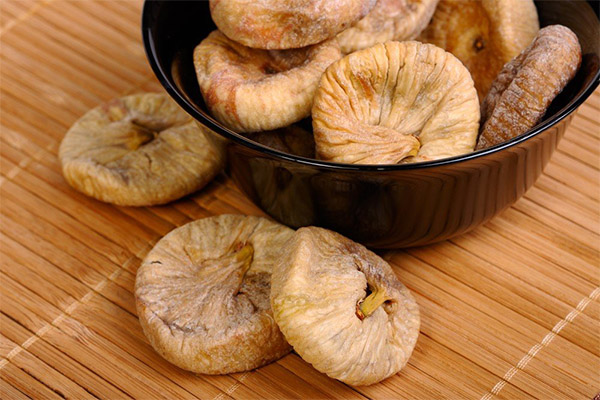
How many you can eat per day
The main restrictions are related to the fact that dried figs contain a lot of sugars. Therefore, you can eat no more than 10 fruits a day. This is the norm for a healthy person without any diseases. If there are any chronic pathologies, but there are no direct contraindications, then the norm is reduced to 3-5 fruits. However, even this amount is enough to provide the body with all the minerals.
Do I have to wash them before eating?
If figs are sold by weight, it is necessary to wash them, because no one knows how many people have had time to touch them with dirty hands. Ways to wash figs will be discussed below. Many people think that if figs are sold in a package, then it is no longer necessary to wash them. But in fact, such fruits only look presentable, but how much you can trust their packer is another matter.
There are two main ways to wash figs:
- Soaking the fruit for up to half an hour in room temperature water, then draining it, and rinsing each fruit thoroughly under running water.
- Dried figs are left in cold water for 15-20 minutes, but they are stirred periodically. Then the water is drained, the dried fruit is rinsed again under running water and poured with boiling water.
If we are talking about Tajik figs, which undergo a natural drying process, there are usually no chemicals in them. Such dried fruits look quite presentable, so it is enough to simply rinse them under warm water. Although many hostesses prefer to pour the figs immediately after this with boiling water for literally a minute or put in the microwave for the same time.
Washing the fruit under running water, it is advisable to use a small brush, as in this case with its help it is possible to better treat the surface of dried fruit, including where it "wrinkles".
Some producers assure that the figs undergo a purification process before they go into the beautiful packaging. But in reality, this still needs to be checked. If there is no sand or some fine debris, and all fruits have the same consistency, and the above described beige color, you can do without intensive washing. If the dried fruit looks too glossy and shiny, it means they have definitely been treated with chemicals.
How to dry figs at home
It is possible to dry figs at home. So the hostess will know that she has at her disposal a quality product without any chemical additives.
There are several ways of drying, the easiest and fastest option is considered the use of the oven.
- Figs (while still fresh) should be washed, cut off their spoiled parts, as well as the stalks. To prepare them for drying, you should first wipe them with paper towels.
- In the meantime, you should heat the oven to the standard 60 degrees. Increase this figure can not be increased, because otherwise the product will not dry, and will bake, losing its properties. Meanwhile, cut the fruit in half and put it on a baking tray.
- Put figs in the oven, slightly ajar the door, so that no excessive moisture accumulates inside the bakery. It will take about 8 hours to dry, stirring the figs from time to time.
By the appearance of the figs you will be able to tell the degree of their readiness. The top shell should be dense and even when cut, it should not release vegetable juice.
As already noted, dried figs can be stored for a year, even more. Therefore, the dried fruits should be placed in containers, close with an airtight lid and leave these containers in the refrigerator.
Theoretically, you can also dry figs outdoors, but only if there is such a possibility, weather conditions, etc. allow. The process itself is more time-consuming, but it works in a natural way, so that all the useful substances are preserved.
Dried fruits should be washed, sliced, spread on a baking tray, laying it with special paper, less often gauze, although it is recommended by some cooks. Place the fruits with the cut upwards, it is important. But for the top layer, gauze will be more effective, it will perfectly protect the figs from voracious insects. This layer of gauze will also ensure even drying. It is recommended to put the tray with figs in a sunny place, so that the sun rays fall on it all the time. In total, this procedure takes up to three days of time. The degree of readiness is determined by whether the surface of the fruit is sticky to your hands. If desired, you can finish drying figs in the oven for a little longer.
What can be made from dried figs: recipes
Dried figs contain a lot of fruit sugars, so they are used mainly for making desserts.
Kompot
Most often, dried figs for compotes are not used by themselves, but in combination with other dried fruits. For example, for 6 fruits of dried figs, take the same amount of prunes and a glass of dried apples.
All dried fruits are sorted out, thoroughly washed, preliminarily soaked in warm, but not hot water for one hour, no more. The water is then necessarily drained. Then the apples are transferred to a pot, pour 1.5-2 liters of water, bring to a boil on high heat, and then remove from the heat and add the figs and prunes. The compote is left to infuse under a closed lid for an hour. This way the dried fruit manages to keep the maximum number of nutrients.
Jam
Dried fig jam is a rather labor-intensive dish. But the result is worth it, because it turns out delicious and useful. For its preparation for 1 kg of dried figs take 0.75 kg of sugar, 1.5 liters of water, 40 ml freshly squeezed lemon juice, 200 grams of walnuts (you can add almonds or pine nuts if you want - a couple of tablespoons in powdered form), 150 g sesame seeds and some anise.

First, in a large container, pour water, add sugar and lemon juice. At this stage, some cooks advise taking another ingredient - chiose mastic sold in drugstores, which has a faint pine flavor and aroma. This way the jam will not be too sweet. But since the ingredient is not cheap, and lemon has already been added to the jam, this ingredient is not necessary.
After mixing all the ingredients, except for the figs and spices, the pot is placed on a high heat and brought to a boil, stirring occasionally, so that the sweet mass does not burn. To do this, use a wooden spoon or spatula. Then the fire is reduced, but the mixture is left on low heat for another 8-10 minutes. Cover the container with a lid is not necessary.
Meanwhile, dried fruits are washed in one of the above methods and dried or at least blot with paper towels. The fruits are cut into quarters, then added to the hot sugar syrup. If desired, a star of anise can be added. Keep the jam on low heat for another half an hour without covering it with the lid.
At the same time, a frying pan is placed on medium heat, on which sesame seeds are toasted without adding oil, periodically stirring its layer with a wooden spatula. This whole procedure takes about 2 minutes, no more. You can easily check if the sesame seeds are ready: they become lightly golden, and they give off their characteristic flavor. Then transfer sesame seeds to a bowl or a plate and wait for them to cool. The same procedure is repeated for coarsely chopped walnuts, which are fried in a pan without oil, only cut into large pieces. They are also left to cool on a plate. If desired, you can add raw pine nuts.
Half an hour after the figs boil, walnuts and sesame seeds can be added to it. Pine nuts are added at the final stage. All the ingredients are stirred, and the jam is boiled for one more minute. Then it is placed in jars, which must first of all be sterilized. The jars are sealed with airtight lids and left to cool. But as they are ready, they are put in the refrigerator, where they will be stored.
Interesting facts about figs
Figs have several names. In addition to the familiar, they are less used in modern conditions figs and figs. There is nothing obscene about the word "fig" in this case, it comes from the quite respectable Latin word ficus. Accordingly, the tree that produces such fruit is called a fig or fig tree. It can reach a height of 7-10 m. Fig trees live a long time, up to a hundred years. Their distinctive feature is the very long winding branches. Their length can be greater than the height of the tree as a whole.
The homeland of the fig tree is the Middle East. From there it made its way to the Mediterranean countries. It is believed that the fig tree was the first tree cultivated in the culture. At least that is the context in which it is mentioned in the Bible, where it is a symbol of peace and well-being. The biblical story also tells us that it was fig leaves that Adam and Eve were forced to use instead of clothes after being expelled from paradise.
Be that as it may, the fig tree was indeed a very common plant in the Middle East. Ancient thinkers knew of its healing properties. In Assyria, figs were used as sweetener even 5 thousand years ago. Aristotle described its usefulness and farming features in his works. At that time figs mainly grew in the Mediterranean region. But nowadays it is grown everywhere where there are appropriate conditions - a lot of sunlight, dry air, well-drained soil. It even grows in the United States, where it was introduced by Catholic missionaries.
The fruits of the fig tree grow to 3-5 cm in diameter. When raw, they weigh 50-70 g, dried fruits weigh less after losing moisture. At first figs turn green, then darken and may acquire either a brown or purple hue.
The flesh of the fruit is sweet and juicy. Many people appreciate raw figs for their unusual combination of delicate flesh texture and crunchy seeds. At the same time, its taste depends largely on the color of the fruit. They can be white, red, yellow, purple, and even black. The shape also differs - it comes in oval, almost round or pear-shaped.
«Important: All information on this site is provided for informational purposes only For educational purposes only. Consult a health care professional before using any recommendations. specialist. Neither the editors nor the authors are liable for any possible harm caused by materials."

